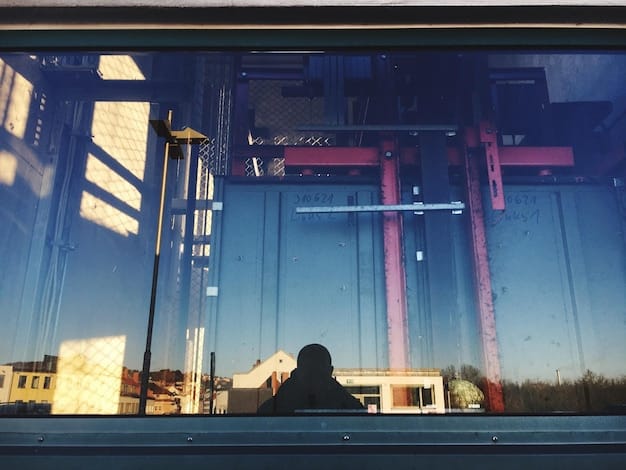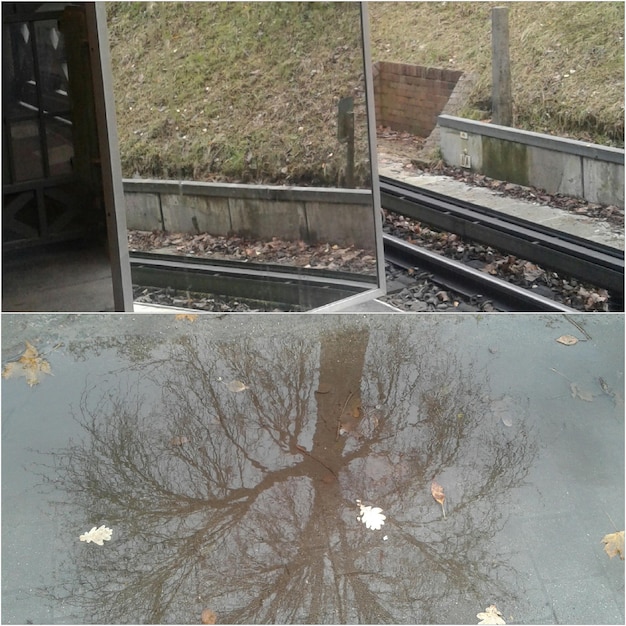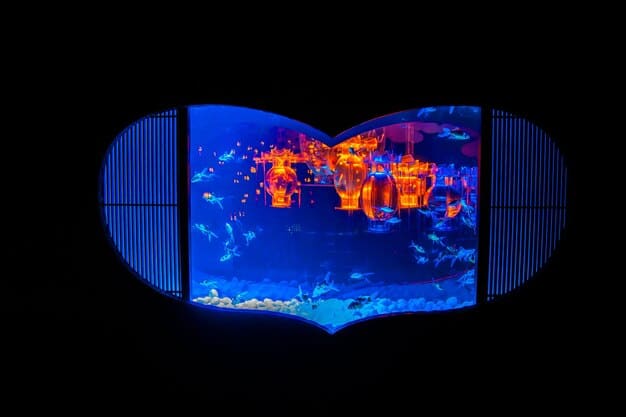Is Ray Tracing Worth the Hype? RTX On/Off Visual Analysis

Ray tracing offers stunning visual enhancements in games, but its impact on performance raises the question: Is ray tracing worth the hype? This analysis explores visual differences and performance costs in five games with and without RTX enabled.
Is ray tracing worth the hype? This question plagues gamers as they weigh visual fidelity against performance costs. Let’s dissect this technology, examining its impact across various titles and helping you decide if the visual leap justifies the performance hit.
Understanding Ray Tracing: A Primer
Ray tracing has become a buzzword in the gaming community. But what exactly is it, and why does it command so much attention? Understanding the basic principles behind ray tracing is crucial before diving into visual comparisons.
What is Ray Tracing?
Traditional rendering techniques simulate light in a simplified manner. Ray tracing, on the other hand, accurately models how light interacts with objects in a scene.
How Does it Work?
Instead of starting from the camera and projecting outwards, ray tracing traces the path of light rays from the light source to the viewer’s eye. This creates realistic reflections, shadows, and global illumination.
Ray tracing works by simulating the path of light as it travels through a virtual environment. This process involves calculating the color and brightness of each pixel on the screen by tracing the path of light from the viewer’s eye back into the scene. The result is more realistic and natural-looking images but require significant processing power.

- Realistic Reflections: Ray tracing enables accurate reflections of surrounding objects, greatly enhancing realism.
- Improved Shadows: Shadows are softer and more natural, with accurate penumbra and umbra.
- Global Illumination: Light bounces realistically off surfaces, creating indirect lighting and enhancing depth.
In short, ray tracing simulates how light interacts with virtual objects, resulting in unparalleled realism in gaming visuals.
Cyberpunk 2077: A Showcase of Ray Tracing Potential
Cyberpunk 2077 quickly became a flagship title for demonstrating ray tracing’s capabilities. The game’s neon-lit cityscape provides a perfect canvas for showcasing realistic reflections and lighting effects.
Visual Impact
With ray tracing enabled, reflections on wet streets and windows become incredibly realistic. Neon signs cast accurate light onto characters and environments.
Performance Cost
Unfortunately, Cyberpunk 2077 is also notorious for its performance issues when ray tracing is enabled. Even on high-end hardware, significant frame rate drops are common.
Ray tracing provides more realistic reflections and lighting, it comes at a great performance cost. Enabling ray tracing in Cyberpunk 2077 can lead to frame rate drops, even on high-end hardware. Consider the performance implications of ray tracing before enabling it on Cyberpunk.
- Reflections: The most noticeable difference is in reflections. Ray tracing accurately portrays reflections on reflective surfaces, enhancing realism.
- Lighting: Ray tracing adds depth and realism to lighting effects, creating a more immersive environment.
- Overall Visuals: With ray tracing, the overall visual quality of Cyberpunk 2077 is significantly enhanced, but at a considerable performance cost.
Ray tracing in Cyberpunk 2077 showcases its full potential while highlighting the need for more optimized implementation.
Control: Ray Tracing as a Core Element
Remedy Entertainment’s Control was one of the early adopters of ray tracing, integrating it seamlessly into the game’s unique art style and physics-based gameplay.
Ray-Traced Reflections and Transparency
Control utilizes ray tracing primarily for reflections and transparent surfaces. The game’s brutalist architecture and otherworldly environments benefit immensely from these effects.
Subtle Yet Significant Enhancements
While not as visually bombastic as Cyberpunk 2077, Control’s ray tracing enhancements are more subtle yet impactful. Reflections appear more accurate, improving the sense of space and depth.
The game’s physics-based gameplay and unique art style benefit greatly from the enhanced reflections and transparency. Ray tracing appears more realistic, which improves the sense of space and depth.

- Realistic reflections: Ray tracing accurately depicts reflections, even in unconventional settings.
- Ambient shadows: Shadows become more detailed and realistic with ray tracing.
- Subtle improvements: The differences may not be immediately apparent, but the overall visual experience is elevated, adding to the game’s ambiance.
Despite its subtle nature, ray tracing in Control enhances its eerie, otherworldly atmosphere, adding tension and visual depth.
Metro Exodus Enhanced Edition: A Ray Tracing Overhaul
Metro Exodus Enhanced Edition takes ray tracing further by integrating it deeply into the game’s rendering pipeline. This version was built with ray tracing in mind, making it a showcase for what the technology can achieve when optimized.
Advanced Ray-Traced Global Illumination
Unlike other games that use ray tracing for specific effects, Metro Exodus Enhanced Edition implements ray-traced global illumination (RTGI). This means that light from all sources, not just direct ones, is calculated using ray tracing.
Significant Visual Upgrade
The result is a more natural and realistic lighting that permeates the entire environment. Shadows are softer, and light bounces realistically off surfaces.
Metro Exodus Enhanced Edition implements RTGI, which provides more natural and realistic lighting. This results in shadows that is softer, and reflections seem more realistic, adding realism to the game environment.
Optimized Performance
Even with such extensive ray tracing, the Enhanced Edition manages to deliver impressive performance, showcasing that it can be both visually stunning and relatively efficient.
- Global illumination: The enhancement provides lighting effects throughout the entire scene, contributing to a lifelike environment.
- Realistic lighting: Shadows are realistically softer. This makes the environment appear realistic.
- Enhanced performance: The Enhanced Edition is optimized for impressive performance, maintaining visual fidelity.
Metro Exodus Enhanced Edition proves that ray tracing, when implemented efficiently, can significantly enhance visual quality without sacrificing performance.
Shadow of the Tomb Raider: Subtle Enhancements
Shadow of the Tomb Raider offers a more subtle implementation of ray tracing, focusing on shadows to enhance the game’s visual depth.
Ray-Traced Shadows
The game uses ray tracing to improve the quality and accuracy of shadows, making them softer and more realistic.
Noticeable Improvement
While the changes are not as dramatic as in other titles, ray-traced shadows add a layer of depth and realism to the environment, especially in the game’s dense jungles and cave systems.
The game employs ray-traced shadows to boost the quality and accuracy of the shadows in the game. This is especially apparent in dense jungles and cave systems.
Subtle enhancements add an additional depth to the game visuals giving the overall experience a more realistic feel.
- Enhanced Shadows: Enhance overall depth to the environment
- Realism: Make the environment natural
- Visual improvement: Adds a visual feel of reality to the game
The game is a great way to add subtle depth and the visual feel of realism to enhance the gaming experience
Dying Light 2 Stay Human: A Mixed Bag
Dying Light 2 Stay Human incorporates ray tracing to improve global illumination, reflections, and shadows. However, the results are a mixed bag, with noticeable visual improvements but also significant performance impacts.
Ray-Traced Global Illumination and Reflections
Ray tracing enhances global illumination, creating a more realistic lighting environment, and improves the quality of reflections on various surfaces.
Inconsistent Performance
Despite these enhancements, Dying Light 2 often suffers from inconsistent performance with ray tracing enabled, even on powerful hardware.
- Visual Enhancements: Ray tracing enhances global illumination and reflections, improving visual quality.
- Performance Issues: The game often suffers from inconsistent performance; the experience differs on each machine.
- Mixed Experience: While ray tracing offers visual benefits, the inconsistent performance can detract from the overall experience.
Dying Light 2’s approach to ray tracing can be satisfying but often brings the performance of the machine down making the overall experience inconsistent, though the visual benefit is great.
| Key Aspect 💡 | Brief Description 📝 |
|---|---|
| ✨ Visual Fidelity | Ray tracing enhances realism with reflections and better lighting. |
| 📉 Performance Impact | Enabling ray tracing often results in significant frame rate drops. |
| 🎮 Game Genre | Ray tracing impact varies; open-world benefits more. |
| 🖥️ Hardware Needs | High-end GPUs are necessary for ray tracing at high settings. |
FAQ
▼
Ray tracing is a rendering technique that simulates the physical behavior of light to produce more realistic and visually appealing graphics in video games. It enhances reflections, shadows, and global illumination for better depth and realism.
▼
Ray tracing requires a graphics card that supports the technology, such as NVIDIA’s RTX series or AMD’s Radeon RX 6000 series. A powerful CPU and sufficient RAM are also recommended for smooth performance. Games can be unplayable with ray tracing enabled if the machine is below the recommended specifications.
▼
Ray tracing is computationally intensive, often leading to a significant drop in frame rates. The performance impact varies depending on the game, the level of ray tracing effects, and the hardware capabilities. It’s a very complex mathematical computation that must be considered beforehand.
▼
Not necessarily. While ray tracing can enhance visuals, it often comes at a performance cost. Consider your hardware, the game’s optimization, and your preference for visual quality versus frame rate when deciding whether to enable ray tracing.
▼
Yes, most games that support ray tracing offer various settings to adjust the level of effects. You can typically choose between different levels of ray tracing quality, allowing you to balance visual improvements with performance.
Conclusion
Ultimately, determining whether is ray tracing worth the hype depends on individual priorities and hardware capabilities. While it undoubtedly elevates visual fidelity, the performance cost can be significant. Gamers must weigh these factors to decide if the enhanced visuals justify the performance hit in each specific game.





